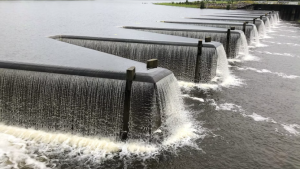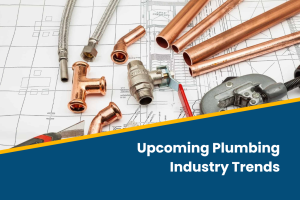Did you just have a very disappointing shower? Was the wait for your bath to fill excruciatingly long? Low water pressure is something that can really frustrate homeowners but also worry them – because identifying the cause can be notoriously difficult. Whether it’s a sudden problem or a chronic annoyance, you want your water flowing strong again. Before you panic-call a plumber, let’s troubleshoot some common causes and return to enjoying those invigorating showers.
Nonetheless, in many cases it’s due to one of 3 potential things:
- Your water supplier carrying out local work
- A burst water pipe, mains or other local fault
- A problem with your property’s plumbing.
So before you start your search for the best and most trustworthy local plumber to help restore your usual satisfying flow, here’s where to start.
Quick Fixes: Let’s Start Here
- Location, Location: Is the problem isolated to one bathroom or kitchen fixture, or is it your whole house? Is it hot and cold water or just low hot water pressure? This helps narrow things down.
- Valves, Valves, Valves: Make sure your main shutoff valve and the valve near your water meter are fully open. They may have been partially closed during maintenance.
- Clogged-up Culprits: Faucet aerators and showerheads can get clogged with mineral buildup. Unscrew them, clean them well (vinegar works wonders), and see if the pressure improves.
- The Hidden Leak: Check your water meter – if it’s spinning even when water isn’t running, you might have a leaky pipe somewhere.
1. Look in the letterbox
Across the country, it’s pretty much standard practice for water suppliers to notify you when they’re about to carry out scheduled local work that could affect your supply. They could be sending a text message to your phone or put a card in the mailbox.
2. Look for local outages
In our internet era, that ‘card in the letterbox’ that could explain why your water pressure is low might actually be online. Luckily, today’s search engine algorithms make it easy to search for local outages and interruptions.
3. Ask the neighbours
If your neighbours are having trouble with low water pressure in their house too, you can at least breathe easy that there’s probably nothing wrong with your own plumbing.
4. Check your mains
Sometimes, the reason why water pressure in the house is low is simply because your mains water supply’s control or stop valve is not fully open for whatever reason.
5. Check for leaks
The best way to check for any leaks that could help explain your loss of water pressure is to look at the dial on your water meter that only moves if water is heading into your property. If all the taps and water-using appliances are off, it should be completely static.
If the 5 easy explanations listed above give you no insight into why you have low or no water pressure, it could be one of these most common issues with your own property’s plumbing:
- You’re trying to use too many outlets at the same time
- Your pipes and drains could be blocked or corroded
- Your shower heads, taps and other fixtures could be faulty or ageing
- Your garden watering systems could be leaking.
6. When It’s Time for the Pros
Tried the basic fixes and still no luck? Here’s when to call a plumber:
- Persistent Problems: If the pressure stays low, a bigger issue may lurk. Speak to a plumber who has experience with increasing water pressure in homes.
- Major Leaks: Don’t let those damage your home!
- Peace of Mind: Plumbers have the tools to diagnose problems quickly and efficiently.
FAQs About Water Pressure
How do I know if my water pressure is too low?
Some telltale signs include a weak shower flow, faucets taking forever to fill a container, and appliances like washing machines running slowly. You can also purchase a water pressure gauge at a hardware store for a precise measurement.
What’s considered normal water pressure for a house?
The standard for water pressure in Australian homes is 500 kPa (kilopascals). However, a range of 140 kPa to 500 kPa is considered generally acceptable. Here’s why there’s some variance:
- Minimum Flow: Many plumbers recommend at least 140 kPa to ensure adequate water flow for daily uses.
- Maximum Limit: The pressure limit of 500 kPa is designed to protect appliances and plumbing fixtures from damage caused by excessive pressure.
- Older Homes: Homes built before 2005 (when the standard was introduced), may have higher water pressure than 500 kPa.
Can low water pressure damage my appliances?
While not immediately damaging, low pressure can cause issues over time. Appliances like washing machines and dishwashers might not clean effectively or could work harder, shortening their lifespan.
Can one of the Best Plumbers help today?
On the other hand, it could be something else entirely! If you’re sick of the goose chase by now, we don’t blame you – which is why Best Plumbers Club is always online and ready to help! Unlike many other local service networks, we simply only work with the best local Australian plumbers near you who are fully verified, positively reviewed and strongly recommended by people just like you. Getting started couldn’t be easier – just let us know your details and we’ll put you in touch with a friendly and fully-approved plumber near you. For guaranteed, fast, friendly, quality, affordable plumbing services, give Best Plumbers Club a try today.








